There are several reasons I like to keep sketchbooks, and many times, I have sketchbooks for different focuses. Here is a list of a few ways I find sketchbooks and sketching useful overall:
To explore ideas and make thoughts tangible
To experiment with various tools and methods
To work on visual/pictorial articulation
To reflect on things/thoughts/feelings
To connect the external with the internal
To disconnect from everyday occurrences
To expand on ideas and create iterations
To discover and learn more overall
In this article, I wanted to share some of my ballpoint pen sketches especially from the pages of a particular sketchbook of mine. With this sketchbook, I chose ballpoint pen because I wanted to challenge myself to keep a sketchbook using a medium that doesn’t lend itself to the kind of mark-making I’m often inclined to use naturally, especially in my paintings. There are several reasons I wanted to do this, but mainly it was about shifting gears from my norm while also using it to create and solve challenges for myself.
Here are a few ways in which I utilized it to do what I thought would be relatively simple challenges that could lead to possible new directions in other work methods.
In terms of materials, I wanted to keep it simple.
Using ballpoint meant basically all I needed was a pen and a sketchbook, it did not require an entirely new or different set-up, and I could take it with me anywhere I went too. Ron had gotten me this really neat sketchbook that was handmade by a friend of ours. The pages are hot press watercolor, and it is not bound, but held together by binder posts, which is great for adding new pages or taking some out, as well as taking apart to scan the pages, and then put back together.
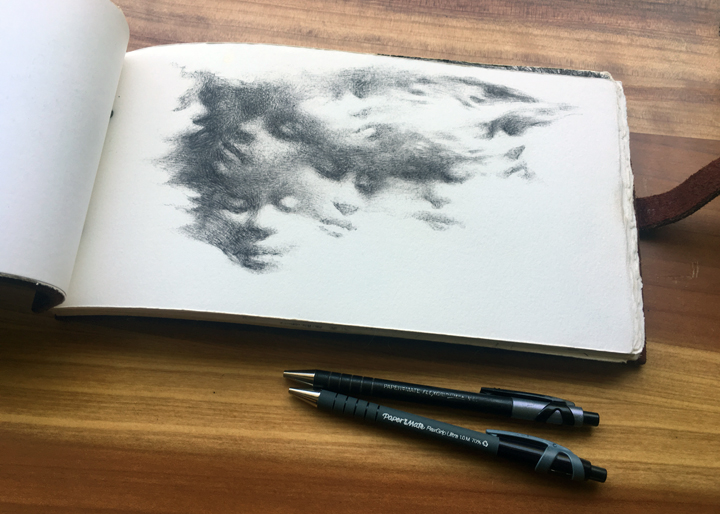
The ballpoint pens shown here are the same but appear different because one is an older model and the outer casing is a bit different – this is my favorite ballpoint pen to sketch with – an inexpensive PaperMate pen. 😀
Variation of the marks is not necessarily built into the tool
A ballpoint pen is a tool that doesn’t have many variations built into the tool itself, so it’s up to the user of the tool to create variation. For example, there’s no tilting the point to create a broader stroke or filling in a large space with a bigger surface by using an edge vs. the point. The mark it makes is all in the point, so how you decide to fill in a large space is with lines, dots, crosshatching, or scribbling.
Practicing pressure sensitivity and varying line weight.
This is mostly in the artist’s dexterity, but there are some exceptions such as the difference between a newer and older pen, and the surface it’s being used on/with. I found myself really enjoying building up layers of soft, light marks in order to create a variance in value, edges and atmosphere.
There is no erasing.
Well, mostly.. But definitely not back to the white of the paper, and most times, erasing ballpoint pen either smears the ink or creates a rougher texture on the paper. There are ways to remove ballpoint from paper (depending on the paper), such as scraping an exacto knife across the surface with a very light touch, but this also has a tendency to scuff the paper too. My point, though, is that since there is really not an ideal erasing option, the key is to work without erasing (or to utilize the smear or scuff that you’ve created by attempting to erase). This is good for several things including but not limited to 1) planning ahead, and 2) not planning ahead and rolling with whatever happens.
A test in Patience.
I’d say I treat this as a form of meditation, and I do it with painting, drawing, and all aspects of the things I do in everyday life. In this case, for example, there is a blank page and a dark ink that comes out of a tiny point of a pen. Sometimes, it bleeds or blobs or smears too. Practicing patience when things such as unintended marks are made or areas take time to fill in rolls over into how I approach situations in all other aspects of life. How I react to these things is a pretty accurate reflection of how I am in most situations. Treating it as a form of meditation would be to let that happen, acknowledge what may occur because of it, and find my way back to losing myself in the process of drawing again. The trendy term for this is mindfulness (which has been around since the beginning of time).
Combining ballpoint with other materials
As many of us know by discovering through experience, ballpoint pen tends to bleed through other media such as acrylic or gouache. In my experience, it even bleeds through bleed-proof white. It’s like magic. Haha. It also bleeds into the paint and gives the paint a blue tint. This can be used in your favor, or avoided – depends on how you decide to take it. Also, there are ways to work with the order or hierarchy of layering of materials that can create some really quite magical results. I had some fun with combining ballpoint with acrylic, and different water-based mediums such as soft gel matte, with the intention of letting the pen show through, but creating an atmospheric depth. And I experimented a bit with how ballpoint turns blue when used with acrylic.
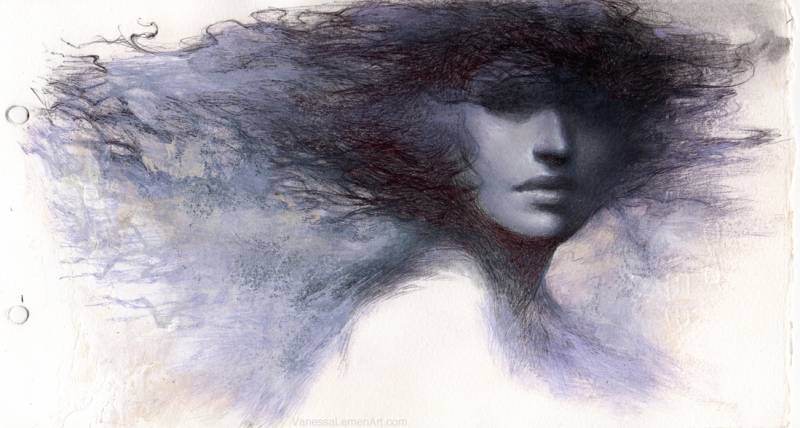
ballpoint pen and layers of acrylic (a gray wash underneath, and white acrylic on top) on watercolor paper
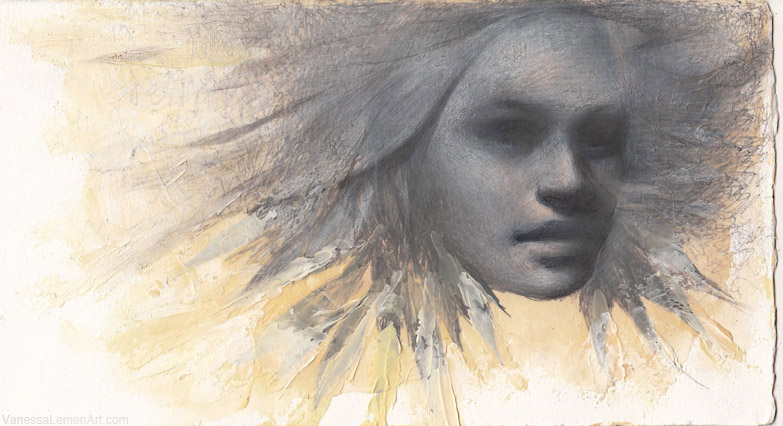
ballpoint pen and soft gel matte combined with white and yellow acrylic on watercolor paper (same materials as image below, but the order of layers is different)
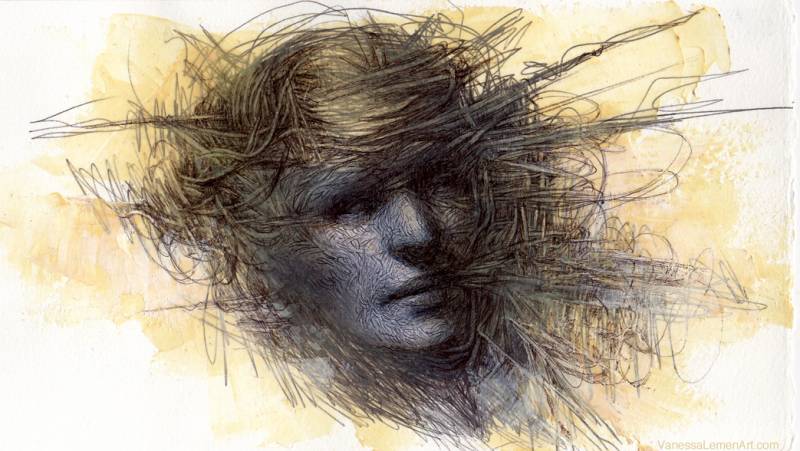
ballpoint pen and soft gel matte combined with white and yellow acrylic (same materials as image above, but the order of layers is different – which gives a different look to the finish)
Discovery by doodling
I wanted to relax and just doodle without expecting or projecting any outcome but to mainly just discover the various uses of the tool on the surface. I tried scribbles to fill in an area, as well as lines and crosshatching, and a combination of all of the above. I also worked a great deal on practicing my pressure sensitivity for varying values, contrast, and gradations. I used some water media, washes and sometimes just water to see what it would do and how much I could use it to shade in an area. And when the pen would sometimes drop one of those ink blobs into a spot on the page, I’d find that though it redirected a possible intention I had initially, the outcome was an interesting direction I may have never taken if that hadn’t happened.

ballpoint pen on wash of gray ink (white appearance of the face is not from white paint, but because there is no gray wash in that area – it is the white of the paper. The blueish tint around the eyes is from rubbing my finger over the ballpoint in that area)
A few last notes:
I found by experimenting that my favorite ballpoint pen to draw with is a PaperMate FlexGrip Ultra. You can get a really nice light mark with it, and can build up the drawing in a way that’s most similar to graphite (compared to other types of ballpoint pens) with lights, halftones, and darks.
Tip: having a piece of cloth or paper towel handy to wipe the point of the pen on every so often is helpful to deter frequent ink blobs. Also, I find that the pen I mentioned above doesn’t blob as frequently as other pens.
I also really enjoy how ballpoint pen changes color depending on how the light hits it – it can appear blue-black or warm-black and also gets a coppery sheen to it. You can see it a slight bit in some of these images, but the scanner doesn’t pick it up quite as well – it’s best seen in person.
I hope you find this list of challenges, discoveries, and examples of images helpful, whether you work in ballpoint or any other medium. Thanks for checking it out.


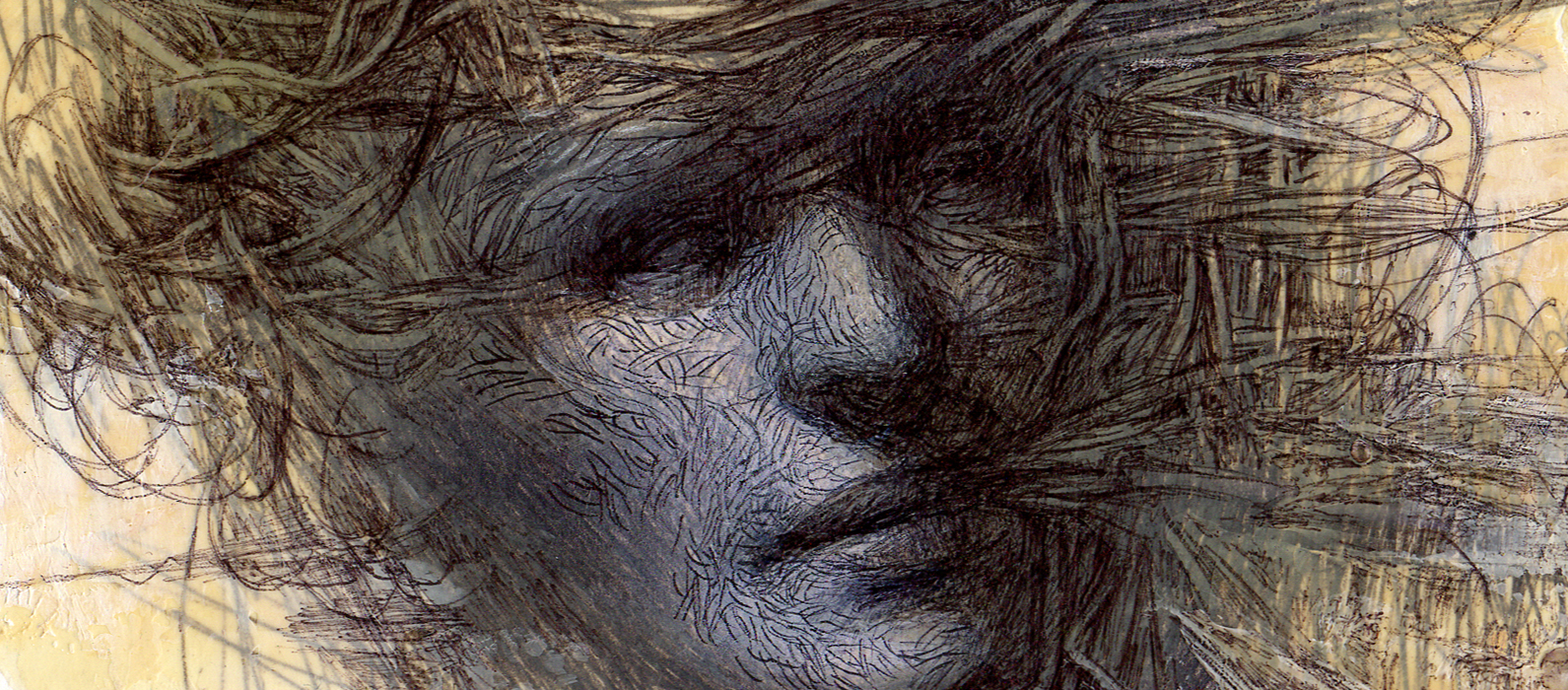

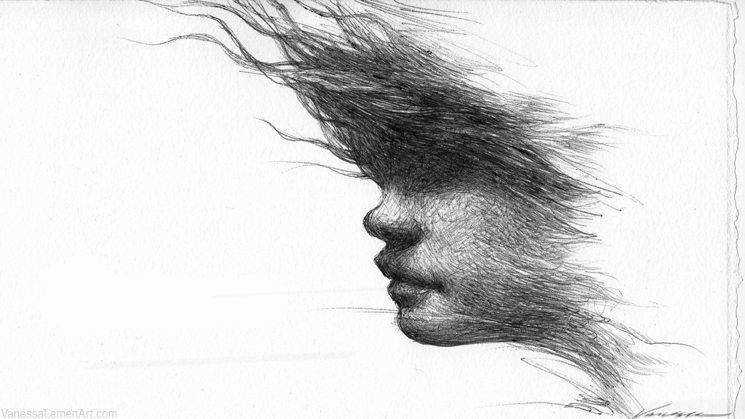
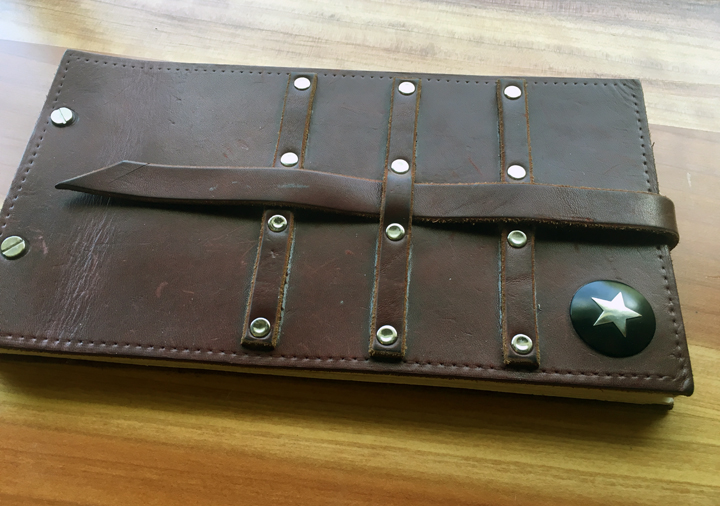

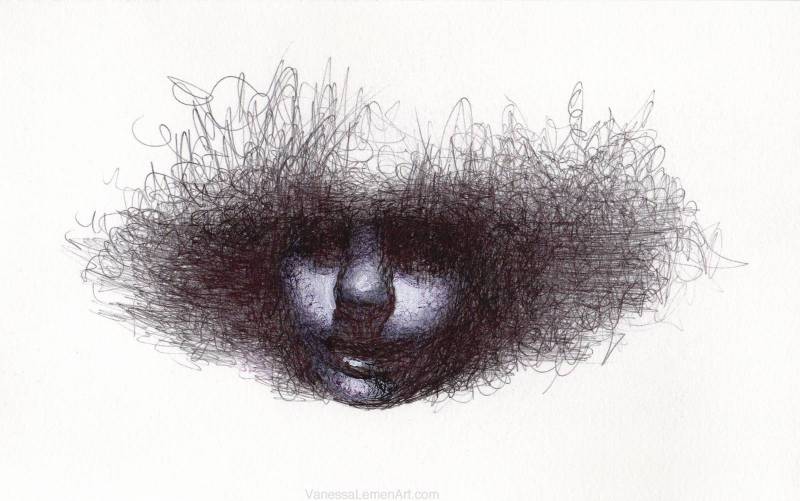


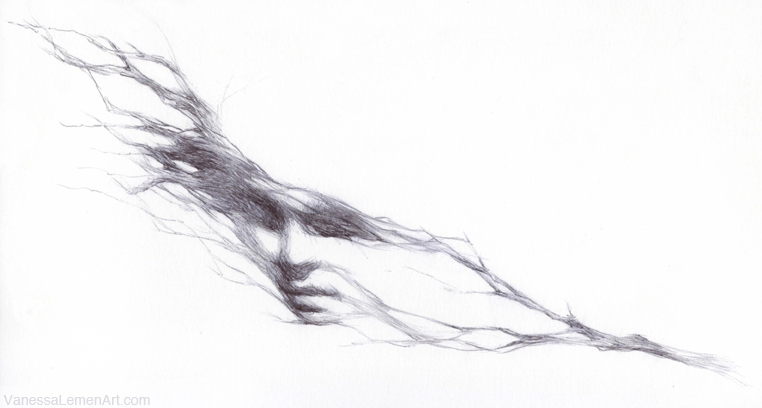
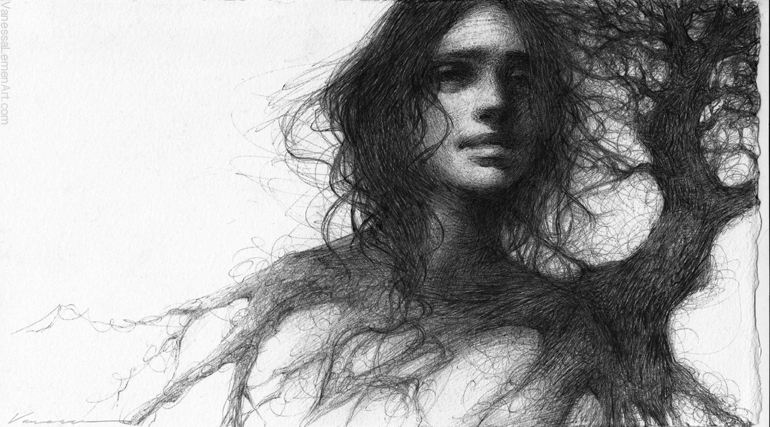
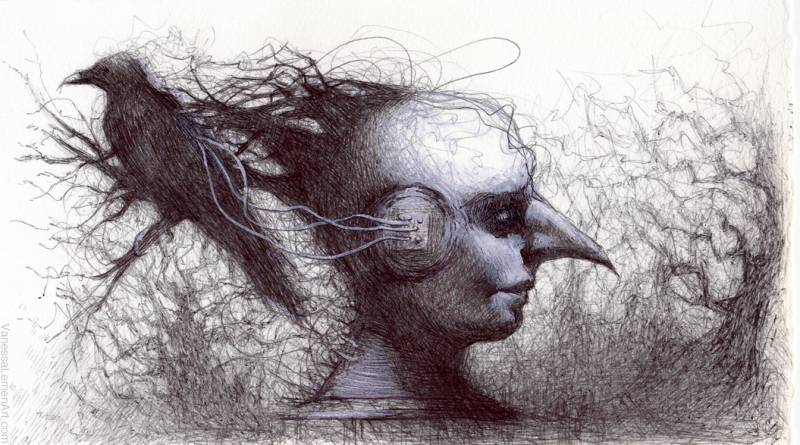
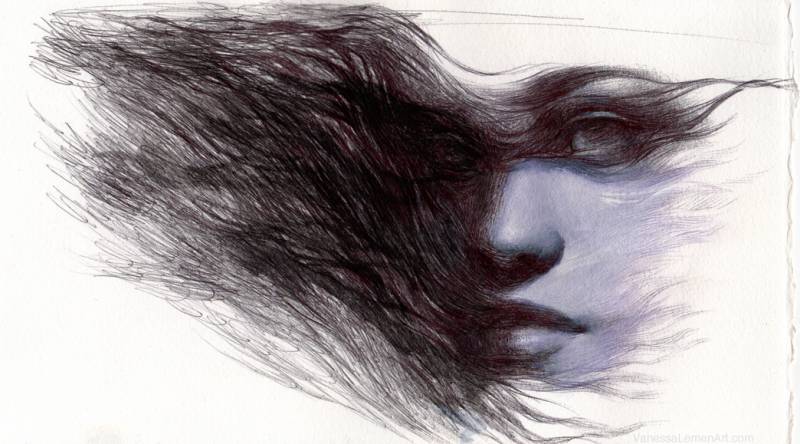
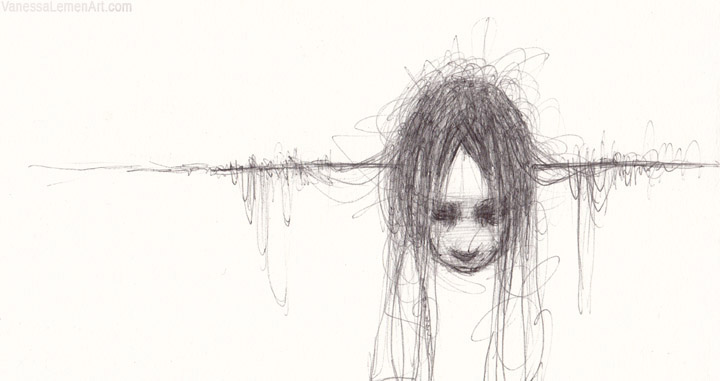
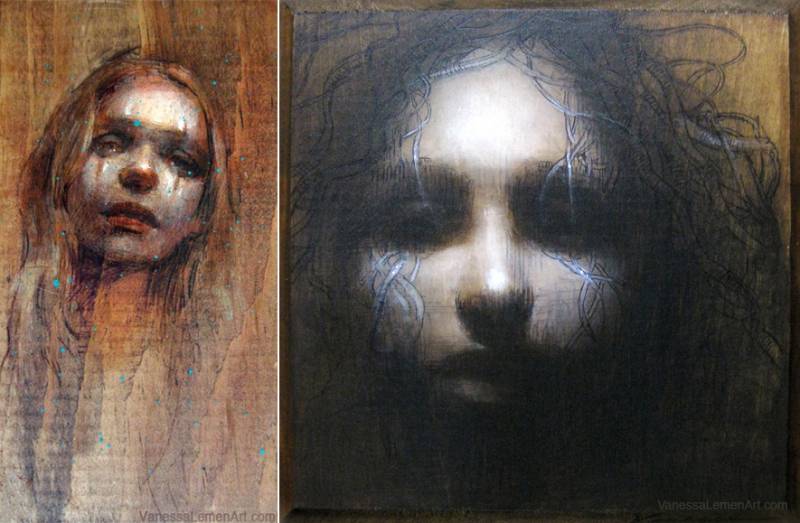
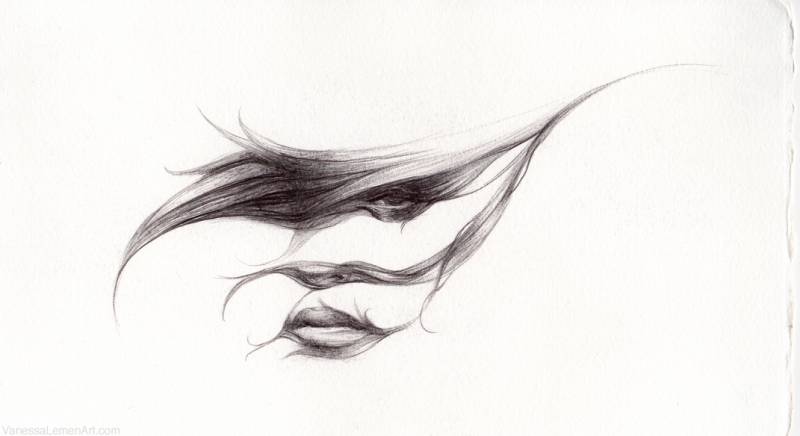

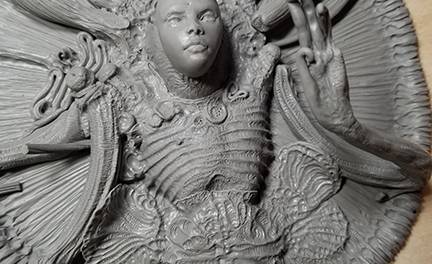
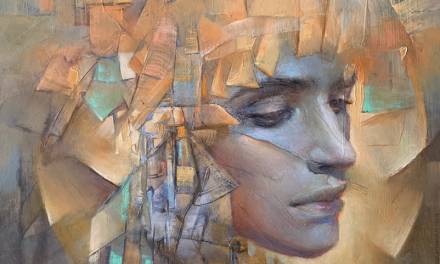
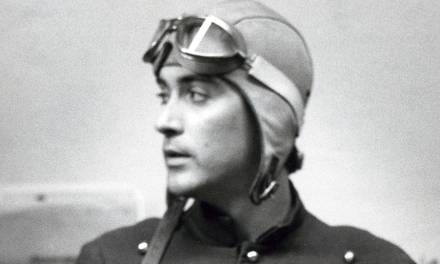
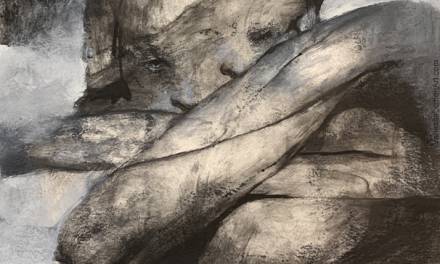
Hi there Vanessa. Great post. I haven’t thought about combine it with other media except white chalk (I use toned paper preferably for ball point). Now after reading your post I’m keen to try to use it on watercolour paper with some washes and white gouache!
I mainly use it for preliminary work, I love that you can see your beginning lines as well so you can remember better how did you think while starting – figuring out gesture and so on
https://petrstranikart.blogspot.com/2017/11/preliminary-sketching.html
hi petr Stranik- thanks for the reply. I do love ballpoint (or graphite too) on toned paper with white chalk too! There are so many variations you can get from those few materials combined- I’m glad to hear you’ll be trying some of these out too – I’m just really big on experimenting and trying things and combining methods. I feel like it can only expand the possibilities- and give way to new ways of working or incorporating methods. Or if nothing else, shake out the kinks and get going again on projects that are already going. Either way, it’s a win-win. 🙂 Thanks again. Glad you liked the post.
Great post Vanessa!
Your constant experimentation is a continous motivation for me, and this post is simply fantastic.
hi Tayete – I’m so glad to hear this! Thanks for letting me know. I really appreciate it! It’s so great to hear that my experimentation is motivation to others as well – To experiment is really a necessary thing for me – like exercising.. and sleeping, eating, and breathing. Haha. I laugh, but I am serious too! We all need it– to constantly explore, discover, falter and recover –so we can evolve, expand, and grow.. No matter what we do. 🙂 Thank you for the reply. So glad you liked the post.
This is a very well written article. I’m a hardcore ballpointer and I always experiment with this wonderful, and underappreciated, medium. I used to be very upset when the ink turned blue and bled when mixed with other media, but now I learned how to use this and how to embrace it instead of fight it.
Just like you said, it’s pure meditation useful in life as well, and in my opinion, no other medium leads you to know your inner self more than a ballpoint pen.
Thank you very much for this article Vanessa, really appreciated.
Hello, good rollpoint rendering is like velvet. A great artist who works with rollpoint: Wilhem M. Busch. You can find pretty of his work here https://one1more2time3.wordpress.com/tag/wilhelm-m-busch/
Wonderful blog Vanessa! Your work is inspiring. I love to sketch and ballpoint is wonderful to get the flow going and liberating an artist. Thank you for sharing your beautiful artwork.
Beautiful work. You are great inspiration for me. Thanks for such wonderful post
This a good way to appreciate the teacher as they put their efforts to train students. UK dissertation Writers appreciates the teachers.